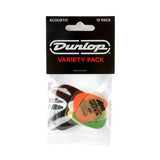The Floyd Rose is one of those bits of guitar gear that some can’t live with and some can’t live without. If you’ve an ear to the ground in the world of guitar you’ll have heard someone complaining about restringing their Floyd Rose equipped guitar and all the headaches associated with it. You may also have heard the wild sounds emanating from Floyd Rose equipped guitars and guitarists, as well as the tuning stability they offer. Everyone at some point in their guitar playing career gets interested in locking tremolos and as we'll explain in this article, for very good reason.
If you'd like to skip to the step-by-step guide then click here.
The HistoryFloyd Rose grew up in love with players like Ritchie Blackmore and Jimi Hendrix. It was their sonic manipulation of the the guitar that had a huge effect on him as a teenager, leading him to extreme measures to try and match their sound whilst simultaneously striking to develop his own. Floyd was breaking whammy bars on a pretty much weekly basis in his sonic endeavours and it was this desire to create extreme sounds that took him on the development path to creating the world's first locking tremolo.
His first attempt involved super glue at the nut, which had enough initial success to encourage him to continue further. Utilising his day job making jewellery and all the machinery available, Floyd created a brass nut with three U-shaped clamps and installed it on his 1963 Fender Strat, which worked well if the vibrato arm wasn’t depressed too deeply. His second attempt worked much better, but the brass construction was too easily dented to be of any use of over time. Undeterred, Floyd changed the construction material to hardened steel, which proved far more durable. He also added a string locking mechanism to the bridge and the rest, as they say, is history.
How it WorksThe Floyd Rose works by locking your guitar strings at two points, the nut and the bridge. At the bridge the saddles lock in the string end via bolts, with fine tuners on each string that allow you to sharpen or flatten should the tuning shift via temperature changes or string stretching from extensive use.
The locking nut has three metal plates that lock down two strings each, preventing your strings from moving over the nut and going out of tune whilst using the whammy bar. The guitar is setup and balanced between these two points, meaning that no matter what you do with the strings, it always returns to its original state of tension, and thus stays in tune.
Changing StringsChanging strings on a Floyd Rose can be an absolute nightmare if you don’t know what you doing. Luckily Northwest Guitars have been there, done that, and got the T-shirt, so allow us to advise you on how best to go about changing the strings on your Floyd Rose equipped guitar!
What You’ll Need How To Restring a Floyd Rose1. Loosen and remove the locking nut plates and put them somewhere safe, if you lose one you’ll be in trouble! Now that the plates are removed you’ll be able to start changing the strings, however make sure you only replace one string at a time.
Doing it one string at a time ensures your bridge retains the tension, which should mean there should be no need to rebalance everything at the end, unless you are changing string gauge (more on that later). Our first step contains one of the most important pieces of advice in this article and trust us, you'll save yourself a massive headache doing it this way!
You could also block the bridge with a rag or soft cloth so that it doesn't sink into the body during the string change, but we've found that the one-at-a-time approach works the best.
2. Use your string winder to unwind the string at the tuning peg then once you have a bit of slack, loosen the bolt at the bridge end to pop the string out.
3. Fit a new string in its place, using your string cutters to remove the ball end, including the small section of string above that is twisted. Place the cut end into your bridge, tightening the bolt so that it holds the string securely, being careful of over tightening which can damage the bridge and bolt. Attach the string to the machine head as you normally would, wrapping the string several times around the tuning post to prevent slippage.
Providing you’re using the same string gauge, once you've completed changing the string you should find the bridge returns to its original position, flush against the body. If you’re changing to a different string gauge then make sure to read to the very end as you will need to make some further adjustments.
4. Repeat the steps for each of the next strings, and once you’ve changed them all, tune up to pitch using your machine heads. You will need to play the instrument a little bit and gently stretch the strings to allow it to settle. You can stretch the strings by running your finger up and down the underside of the string, pulling it up gently as you go.
Do not use your tremolo arm during this phase and we’d advise avoiding any string bending too, as this will just cause everything to go out of tune again.
Once you’ve allowed the strings to bed in so that the tuning is fairly stable with the nut unlocked, you can lock the nut down and make any further adjustments to the tuning using the fine tuners on the bridge. Do not touch the machine heads on your headstock once you’ve locked the nut as you will potentially break some strings! The bridge should sit flush with the body but if you find it’s pitching back or forward a little, have a read of the next section for how to correct this.
We’d always recommend playing the guitar in a little before proceeding to the next step as it can often take a little time for the strings to stretch and the tension between nut and bridge to equalise.
Changing String Gauge?If you are changing your string gauge then you will need to make an adjustment to the tremolo springs in the back of your guitar. If it is a lighter set then the bridge will pitch back into the body as there is less tension, if it is a heavier set of strings then the bridge will pitch forward, sticking up from the body as there is now more tension on it.
Remove the backplate of your guitar (keep those screws somewhere safe!) and you will see several springs, attached to both the tremolo block and a metal plate that is screwed into the body of the guitar. These screws are what we'll be adjusting to correct the disparity in the guitar bridge.
Tightening increases the tension, which is what you need to do if the bridge is lifting away from the body. Loosening the screws will relieve tension, which is necessary if your bridge is dropping into the body of the guitar. Make sure to only do quarter turns, checking the tuning after each turn and repeating until the bridge sits flush against the body. Whilst this is time consuming it will prevent you from going too far one way and having to go back the other way later on when the strings stretch.
Once this final adjustment is done, your guitar is set up and ready to rock!
Maintenance TipsMaintaining your guitar is key to ensure long life and consistent performance, whether you have a Floyd Rose or not. Your guitar bridge in particular does a difficult job under harsh working conditions so taking good care of it applies to any guitar.
Ensure you wipe down your Floyd Rose bridge after every use, human sweat can gradually wear away the finish, cause rust, and eventually affect the working of the unit. You can clean the moving parts with any kind of thin, lubricating oil like WD40 and if you’re finding dust getting the little spaces of the bridge or nut, a can of compressed air can help you keep everything clean and clear.
Ensure your locking nut plates are facing the correct way for optimal performance. This is a lesser known fact but locking nut plates on a Floyd Rose are supposed to face a particular way to lock down the string properly. If you’re noticing slippage of the strings, you may have the locking plates on the wrong way, so ensure that the ‘peak’ of the block is running parallel to the strings. If you’re getting slippage on a particular string you can also try rotating the locking plate 180 degrees to see if that resolves the issue.
In ConclusionThe Floyd Rose is a tricky customer that’s for sure, and there’s no doubting they’re more work than a typical hard tail or vintage style tremolo. However, the possibilities they offer to expand the sound of your guitar and the tuning stability (once correctly setup) is what makes them so attractive to many a guitarist. Once you know how to setup and maintain a locking tremolo system, they become an incredibly useful tool to have in your armoury. Guitar greats like Eddie Van Halen and Joe Satriani certainly wouldn’t sound the same without one!
Check out all of our Floyd Rose Tremolos here.
Learn MoreFind out about all the different types of guitar bridges with our Ultimate Guitar Bridge Guide.
If a Floyd Rose isn't right for you, check out the Easy Way To Install a Bigsby Vibrato.
Upgrade your knowledge on another crucial component, Guitar Tuners.


























